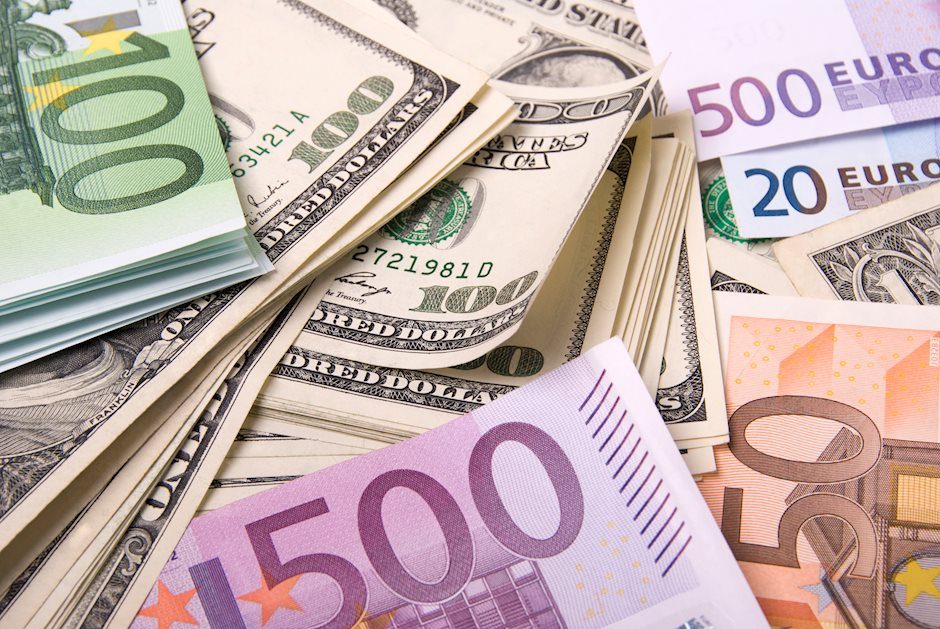Forex Today: US Dollar slides as markets reassess odds of large Fed rate cut

Here is what you need to know on Friday, September 13:
Following the bullish action seen in the first half of the week, the US Dollar (USD) Index turned south on Thursday and erased all of its weekly gains. The index struggles to gain traction early Friday and edges lower toward 101.00. Eurostat will release Industrial Production data for July and the US economic docket will feature August Export Price Index and Import Price Index data, alongside the University of Michigan's Consumer Sentiment Survey for September.
US Dollar PRICE This week
The table below shows the percentage change of US Dollar (USD) against listed major currencies this week. US Dollar was the weakest against the Japanese Yen.
| USD | EUR | GBP | JPY | CAD | AUD | NZD | CHF | |
|---|---|---|---|---|---|---|---|---|
| USD | 0.08% | 0.02% | -0.82% | 0.12% | -0.66% | -0.06% | 0.55% | |
| EUR | -0.08% | -0.12% | -0.88% | 0.04% | -0.78% | -0.12% | 0.44% | |
| GBP | -0.02% | 0.12% | -0.87% | 0.16% | -0.67% | -0.03% | 0.56% | |
| JPY | 0.82% | 0.88% | 0.87% | 0.96% | 0.19% | 0.77% | 1.57% | |
| CAD | -0.12% | -0.04% | -0.16% | -0.96% | -0.74% | -0.19% | 0.59% | |
| AUD | 0.66% | 0.78% | 0.67% | -0.19% | 0.74% | 0.64% | 1.21% | |
| NZD | 0.06% | 0.12% | 0.03% | -0.77% | 0.19% | -0.64% | 0.59% | |
| CHF | -0.55% | -0.44% | -0.56% | -1.57% | -0.59% | -1.21% | -0.59% |
The heat map shows percentage changes of major currencies against each other. The base currency is picked from the left column, while the quote currency is picked from the top row. For example, if you pick the US Dollar from the left column and move along the horizontal line to the Japanese Yen, the percentage change displayed in the box will represent USD (base)/JPY (quote).
Soft producer inflation data from the US revived expectations for a large Federal Reserve (Fed) rate cut at the policy meeting next week, causing the USD to weaken against its major rivals. On a yearly basis, the Producer Price Index (PPI) rose 1.7% in August, down from 2.1% in July and below the market expectation of 1.8%. Additionally, the improving risk mood put additional weight on the USD's shoulders. Early Friday, US stock index futures trade flat and the 10-year US Treasury bond yield stays in negative territory at around 3.65%.
The European Central Bank (ECB) announced on Thursday that it lowered the deposit facility rate, also known as the benchmark interest rate, by 25 basis points (bps) to 3.5% as expected. In the post-meeting press conference, ECB President Christine Lagarde refrained from hinting on whether they are planning to ease policy further in the near term. EUR/USD gathered bullish momentum in the second half of the day on Thursday and rose more than 0.5%, snapping a four-day losing streak.
GBP/USD benefited from improving risk mood and the renewed USD weakness on Thursday and gained over 0.6%. The pair stays relatively quiet and trades in a tight channel above 1.3100 in the European morning.
Fitch Ratings said in its latest report that they expect the Bank of Japan’s (BoJ) to hike rates to 0.5% by the end of 2024, 0.75% in 2025 and 1% by end-2026. After closing the day marginally lower on Thursday, USD/JPY continues to stretch lower in the European morning and was last seen losing 0.5% on the day at 141.10.
Gold surged higher in the second half of the day on Thursday and reached a new record-high of $2,570 during the Asian trading hours on Friday. Although XAU/USD retreated slightly, it holds above $2,560 and remains on track to post strong weekly gains.
Interest rates FAQs
Interest rates are charged by financial institutions on loans to borrowers and are paid as interest to savers and depositors. They are influenced by base lending rates, which are set by central banks in response to changes in the economy. Central banks normally have a mandate to ensure price stability, which in most cases means targeting a core inflation rate of around 2%. If inflation falls below target the central bank may cut base lending rates, with a view to stimulating lending and boosting the economy. If inflation rises substantially above 2% it normally results in the central bank raising base lending rates in an attempt to lower inflation.
Higher interest rates generally help strengthen a country’s currency as they make it a more attractive place for global investors to park their money.
Higher interest rates overall weigh on the price of Gold because they increase the opportunity cost of holding Gold instead of investing in an interest-bearing asset or placing cash in the bank. If interest rates are high that usually pushes up the price of the US Dollar (USD), and since Gold is priced in Dollars, this has the effect of lowering the price of Gold.
The Fed funds rate is the overnight rate at which US banks lend to each other. It is the oft-quoted headline rate set by the Federal Reserve at its FOMC meetings. It is set as a range, for example 4.75%-5.00%, though the upper limit (in that case 5.00%) is the quoted figure. Market expectations for future Fed funds rate are tracked by the CME FedWatch tool, which shapes how many financial markets behave in anticipation of future Federal Reserve monetary policy decisions.
Author

Eren Sengezer
FXStreet
As an economist at heart, Eren Sengezer specializes in the assessment of the short-term and long-term impacts of macroeconomic data, central bank policies and political developments on financial assets.

















